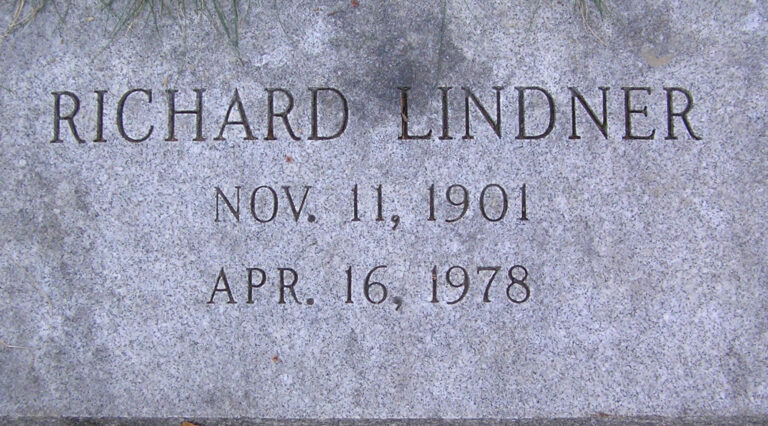This biography is based on Werner Spies (ed.) and Claudia Loyall,
« Richard Lindner: Catalogue Raisonné of Paintings, Watercolors, and Drawings » Munich 1999.
1901
Richard Lindner is born on November 11, 1901 in Hamburg as the middle child of Jüdell (Julius) and Mina (née Bornstein) Lindner. He has an older sister, Lissy (b. 1894); a younger brother, Arthur, will be born in 1904; a third sibling, Curth, had died soon after birth. The family lives at Schulterblatt 64, located in St. Pauli, the Hamburg quarter famous at the time for public festivals.
Jüddel Lindner, the son of a furrier from the Hamburg suburb of Altona and a member of the Hochdeutsche Israelitengemeinde (High German Jewish Congregation) Altona, works as a commercial clark. His wife, Mina Bornstein, was born in New York, the daughter of German parents.
1902
On April 28, Jüdell Lindner moves to Christiania (today Oslo, Norway).
1905
The Lindner family lives in Nuremberg, Gartenstrasse 25. The father works as a salesman.
1907
On February 19, Julius Lindner obtains Bavarian citizenship. He lives in Nuremberg, Zufuhrstrasse 10. Until 1927, five changes of residence can be reconstructed.
Mina Bornstein began to operate a custom-fitting corset business in 1913.
1915
Lissy Linder dies. Richard Lindner later reported that the death of his older sister deeply affected him.
1922
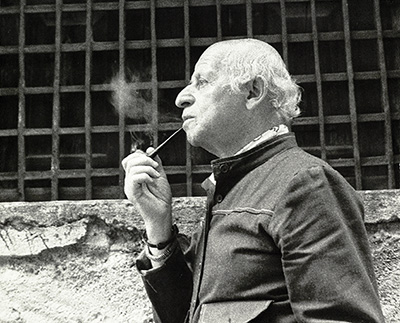
In the summer, Richard Lindner begins studying at the Kunstgewerbeschule (Arts and Crafts School) Nuremberg; he attends classes in life drawing oil painting. Until then, he had been working as a commercial clark. However, later he explained that he decided to devote himself to the visual arts because he found a bohemian lifestyle exciting which inspired his choice of a new profession.
1925
Lives in Frankfurt. Returns to Nuremberg in August and resumes his studies.
1926
Becomes‚ Master Pupil under Prof. Max Körner at the Kunstgewerbeschule Nuremberg.
Participates in several competitions for toy design and tobacco advertising. Creates graphic art with fellow students. In January the Städtische Kunsthalle Mannheim awards Lindner the fourth prize for a contemporary mask and costume and acquires one of his works.
1927
Moves to Berlin in September where he lives in the Edenhotel; maintains an address in Nuremberg.
Creates layout and cover illustrations.
1929
Registers back in Nuremberg in April. A week after his return, he moves to Munich.
1930
On 24 June, marries Elsbeth Schülein, a fellow student from Nuremberg, who joins him in Munich in July. Lives in the Munich district of Schwabing at Unertlstrasse 1. Spends time at Café Heck with fellow artists.
Illustrates newspapers and news magazines, such as Münchner Neueste Nachrichten, Süddeutsche Sonntagspost, and Münchner Illustrierte Presse for the publisher Knorr and Hirth. Works in collaboration with Hermann Landshoff. An article about these illustrations in the graphic arts journal Das Zelt is the first publication on Richard Lindner.
Makes drawings and color illustrations for books. Elsbeth Lindner attends the Meisterschule für Mode (Technical College of Fashion Design) in Munich.
1933
Leaves Munich soon after Hitler is declared Chancellor. Emigrates to Paris.
1934
Julius and Mina Lindner move to Munich on 13 July. They live in Schwabing, Kaiserstrasse 21, and later at Knorrstrasse 148. Richard Lindner lives with his wife in Paris at 4, rue Jules Chaplain. Elsbeth is a successful illustrator for the fashion magazines Vogue and Jardin des Modes.
1936
Paints four watercolors that are printed on posters advertising pianos built by Barnes, the London company. Posters are featured in his first exhibition that Alexandre Alexandre reports was a failure.
Shortly before the outbreak of World War II, lives in the studio and the Hôtel des Terrasses near the rue de la Glacière. Makes friends with Alexandre Alexandre, Maria Eisner, the writer Hans Possendorf, and Paul Wiener.
1939
In September, when war was declared, Richard and Elsbeth Lindner, with other German refugees, are captured and interned by the French police. Richard is imprisoned in a camp in Villemalard near Blois, about 100 miles from Paris. Elsbeth Lindner is released first and emigrates from Casablanca to the United States, where she has relatives.
1941
On 13 February, Richard Lindner writes from Lyon to friends in Switzerland that he has survived the concentration camp and is sailing to New York from Lisbon. His wife is already in New York. She and Maria Eisner facilitate Lindner’s immigration by helping him to get the necessary papers. Arrives at the Port of New York on March 17.
Works as a magazine and book illustrator. One of his first works to be published is a watercolor of a conductor which appears in the October edition of Town & Country, illustrating an anecdote about the composer Jacques Offenbach.
1942
Receives an advertising commission from the Container Corporation of America. One of his works is included in the 21st annual of advertising art sponsored by the Art Directors Club of New York, at the Metropolitan Museum of Art. Separates from Elsbeth and lives at 5 East 62nd Street. Elsbeth Lindner, who now calls herself Jacqueline, draws illustrations for fashion magazines. She lives at 100 East 73rd Street in New York.
1943
On February 16, Julius Linder dies in Theresienstadt.
For the purpose of naturalization, Richard Lindner re-enters the United States at Buffalo, New York, on February 4. Receives Certificate of Arrival. Petitions for naturalization on May 26.
1944
Elsbeth and Richard Lindner divorce. Richard lives in an apartment in the Upper Seventies.
His ex-wife resides at 155 East 77th Street with the Polish-born writer and journalist Joseph Bornstein. She uses the name Jacqueline Lindner professionally even after she marries Bornstein.
Richard Lindnere illustrates an edition of Gustave Flaubert`s Madame Bovary published by Peter Pauper Press.
1945
Meets artist Saul Steinberg.
1945-46
Befriends fellow émigrés Hermann and Toni Kesten, Leopold Schwarzschild and Martin Gumpert. Meets photographer Evelyn Hofer and painter Hedda Sterne through artist René Bouché.
1946
A.A. Wyn, New York, publishes Tales of Hofmann, edited by Christopher Lazare, with twentyeight illustrations by Richard Lindner.
Lindner spends the summer at Jaqueline and Joseph Bornstein’s residence in Katonah, New York. Decides to paint Wunderkind. Accepts an invitation on July 7 from Hermann and Tony Kesten to visit to their country home.
Draws cover installation for the American edition of Twins of Nuremberg by Herman Kesten, published by L.B. Fischer, New York.
1948
The Continental Tails of Henry Wadsworth Longfellow appears with 12 illustrations and a cover illustration by Richard Lindner, published by Story Classics, Allentown, Pennsylvania.
Is naturalized on 15 November 1948.
In the following years becomes close friends with, among others, Eugene Berman, René Bouché, Ilse Getz, Szymon and Maria Goldberg, Ingeborg ten Haeff, Eva Landshoff, Ruth and Tino Nivola, Saul Steinberg, Hedda Sterne, Hermann and Ruth Vollmer, Paul Lester Wiener and Bernard Rudofsky.
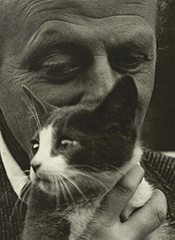
1950
Travels to Paris to paint. Sails to France on the Queen Elizabeth in May, stays for the summer, and plans to return to New York in September. Lives at the Hôtel Perreyve, 63, rue Madame.
His friends from New York, Szymon and Maria Goldberg, stay at the same hotel. One of the first paintings that Lindner finishes is a portrait, Verlaine.
Paints Marcel Proust after his return to New York.
With Saul Steinberg, visits stores on Sixth Avenue that sell old American magazines.
1952
Joseph Bornstein dies on 25 June.
Jacqueline cannot overcome her grief. Bornstein’s sister Bertha travels with her to Vinalhaven, Maine, in September. Jacqueline then travels to California for a week. Commits suicide after her return to New York.
Richard receives the Award for Distinctive Merit for general illustration from the Art Directors Club of New York. The prizewinning work, a portrait of Immanuel Kant, was commissioned by the Container Corporation of America for an advertising illustration. The artist uses the back of the document from the Art Directors Club as the support for the final preparatory drawing for The Meeting, 1953.
Receive a one-year advertising commission from a perfume company.
In September paints the Child’s Dream. Refers to the painting as « Wonderboy, skipping over a
rope ». Appointed part-time « instructor in graphic expression » at the Pratt Institute, Brooklyn.
1953
Travels with Evelyn to Europe at the end of December 1952, spending five days in Fextal, Switzerland, five days in Milan, and a day in Zurich; stays in Paris from January 4-10.
Begins studies for first major painting, The Meeting. One of the first compositional sketches bears the inscription « August 1953 ».
1954
After Hedda Sterne introduces him to Betty Parsons, has first solo exhibition in January – February at Betty Parsons Gallery. No paintings are sold. Draws title cards for the CVS TV program Studio One. Among the other artists to create such illustrations are René Robert Bouché, John Groth, Dong Kingman, Joseph Low and Andy Warhol.
Befriends painter Leo Rabkin and his wife, Dorothy.
1956
Meets Priscilla Morgan, a literary agent, through René Bouché. Works as a part-time instructor in design at the Pratt Institute.
Spends the summer in Paris. 1957 moves to 178 East 95th Street. Isamu Noguchi is his neighbor. Appointed visiting artist at the Yale University School of Art and Architecture, New Haven, Connecticut.Receives the William and Noma Copley Foundation Award.
1959
Meets Andy Warhol.
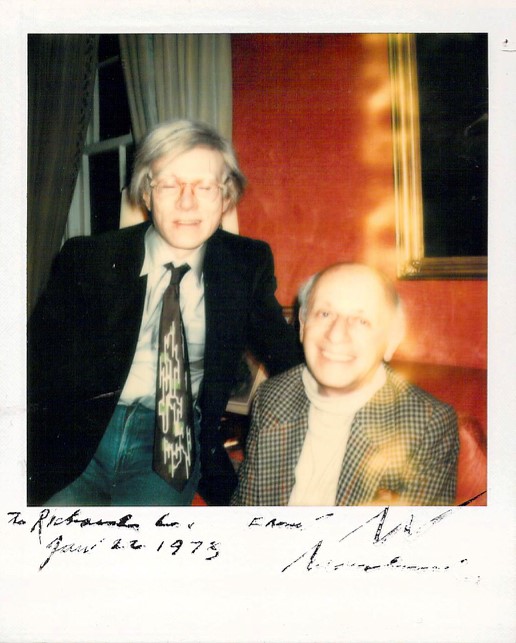
1960
Appointed assistant professor of art at the Pratt Institute.
1961
Arne Ekstrom visits Richard Lindner’s studio. Lindner’s first solo exhibition at Cordier and Warren Gallery, New York, presents a retrospective of his work.
William and Noma Copley Foundation publishes first Lindner monograph, written by Sidney Tillim.
1962
His collection of toys and masks, documented in the photograph by Evelyn Hofer of Lindner’s studio, appears on the cover of the February edition of Aujourd’hui.
Musical Visit, 1961, included in the exhibition « Recent Painting U.S.A.: The Figure » is the first of Lindner’s paintings to be shown at the Museum of Modern Art, New York.
The Museum of Modern Art acquires The Meeting.
Solo exhibition at Robert Fraser Gallery, London, includes several paintings reworked by Lindner.
1963
Participates in the exhibition “Americans 1963” at the Museum of Modern Art, New York.
Spends June in Spoleto, Italy, with Isamu Noguchi and Priscilla Morgan.
1964
Moves to 333 East 69th Street. Karel Appel is his neighbor.
1965
Has solo exhibition at Galerie Claude Bernard, Paris; participates in exhibition “Erotic Art 66” at Sidney Janis Gallery, New York.
Lectures at the Hochschule für Bildende Künste (College of Graphic Arts), Hamburg, where he paints Disneyland.
Frequents the Café Chérie at the Steindamm, Hamburg, with the art collectors Mr. and Mrs. Siegfried Poppe.
1966
Richard Lindner disontinues teaching at the Pratt Institute.
Visits René Magritte in Brussels shortly before Magritte’s death.
1967
In preparation for Lindner’s first retrospective, Rolf-Gunter Dienst in cooperation with Arne Ekstrom compiles a list of all of his works.
“Marilyn Was Here,” Lindners first lithographic portfolio, containing 17 lithographs, four in color, is published by Manus Presse, Stuttgart. Participates in the exhibition “Homage to Marilyn Monroe” at Sidney Janis Gallery.
1968
Is included in “documenta IV,” Kassel; first museum retrospective, “Richard Lindner,” travels from Leverkusen to Hanover, Baden-Baden, Berlin.
1969
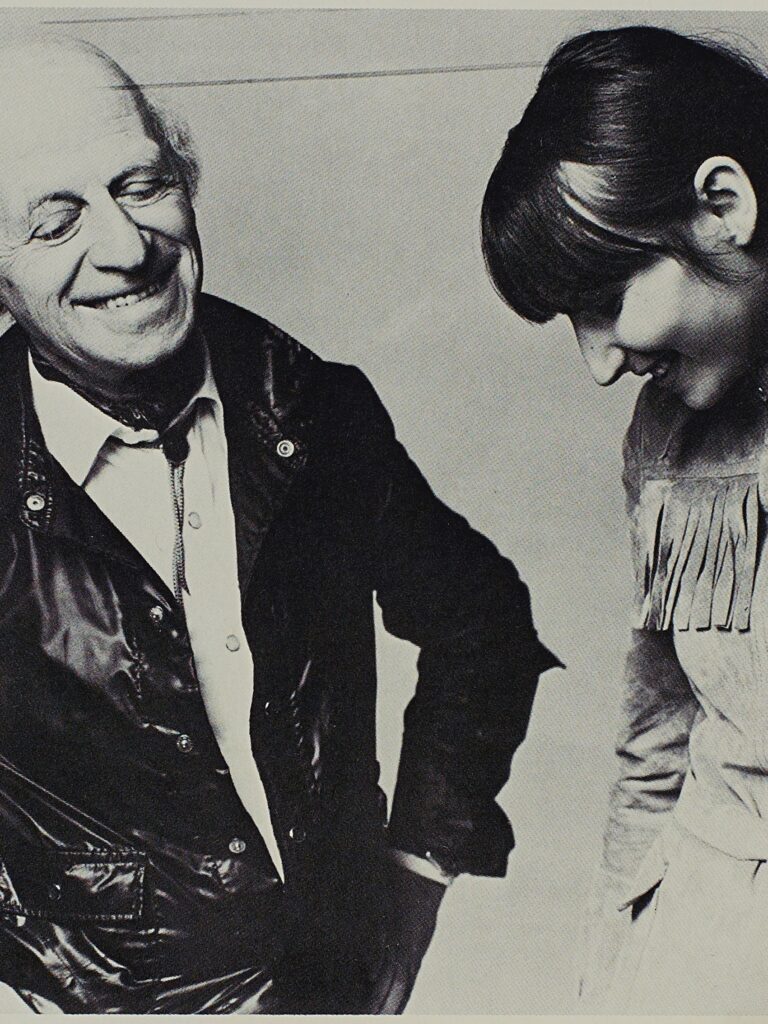
1970
Monographs by Dore Ashton and Rolf-Gunter Dienst are published.
Receives the Lichtwark Award of the city of Hamburg.
1971
In March, “Fun City,” a portfolio of 14 lithographs in 12 to 18 colors, is published by Samuel Shore for Shorewood Publishers, New York. The portfolio is based on an earlier series of watercolors.
Richard and Denise Lindner travel to Paris more often and acquire an apartment at Place de Furstenberg.
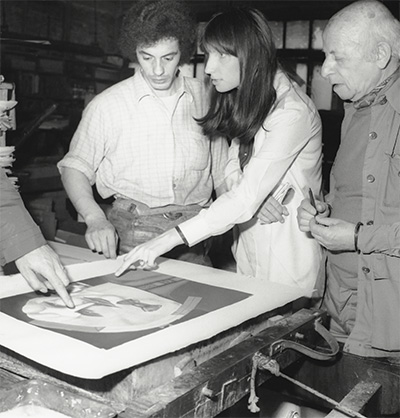
1972
Elected member of American Academy of Arts and Letters, New York.
Fisher Fine Art Ltd., London and Knoedler and Co., New York, become Lindner’s agent until 1975.
Richard Lindner distributes his gingerbread multiples in the “Eat-Art-Gallery” in Düsseldorf, which is affiliated with Daniel Spoerri’s restaurant.
On 29 September, Richard and Denise Lindner purchase an apartment and studio at 3, rue des Saints-Pères, Paris. Denise furnishes the flat with decorative art. Lindner spends the summer in his Paris studio from May to September but continues to return to New York frequently.
He later explains: “I need to recharge myself by coming back here all the time. Actually, all the sketches for my paintings are made in New York. … All the ideas for paintings come from what I see here. Then I go back to Paris and paint the pictures.” Once Lindner flew to New York, and returned to Paris after two days with an idea for a painting. He later explained that for him Paris is a city of the 19th century and New York one of the 20th, and that sources for his paintings can be found only in New York.
While in Paris, the artist likes to visit the cafés Deux Magots and the Brasserie Lipp and to dine at Le Voltaire or at La Coupole. He owns a Bentley and has a driver, calling the car his life-size toy, but he uses it only rarely and finally sells it.
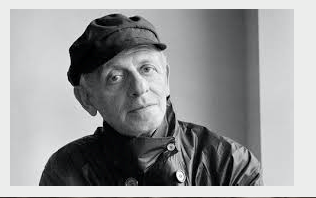
1974
The retrospective “Richard Lindner” opens at the Musée National d’art Moderne, Paris, and travels to Rotterdam, Düsseldorf, Zurich, Nuremberg, and Vienna through 1975.
1975
Richard and Denise Lindner move to 3 East 71st Street.
Galerie Maeght, Paris, becomes Lindner’s agent.
1976
In the summer, Lindner visits Nuremberg for the first time since his emigration.
1977
May-July. Stephen Prokopoff organizes the last American museum retrospective during Linder’s lifetime for the Museum of Contemporary Art, Chicago.
Lindner discusses his life and his art in a film by Johannes Schaaf, Richard Lindner ’77.
1978
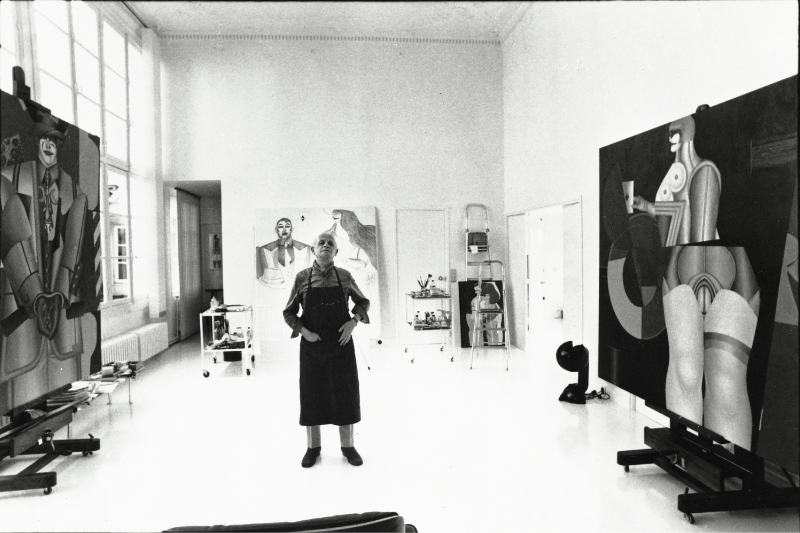
April-May. Exhibition at Sidney Janis Gallery.
On April 16, at the age of seventy-seven, Lindner succumbs to a fatal heart attack in his apartment in New York. A memorial service is held at Sidney Janis Gallery on May 6.
Eulogies are given by Sidney Janis and Saul Steinberg. Richard Lindner is buried at the Westchester Hills Cemetery of the Stephen Wise Synagogue, Hastings-on-Hudson, New York.
